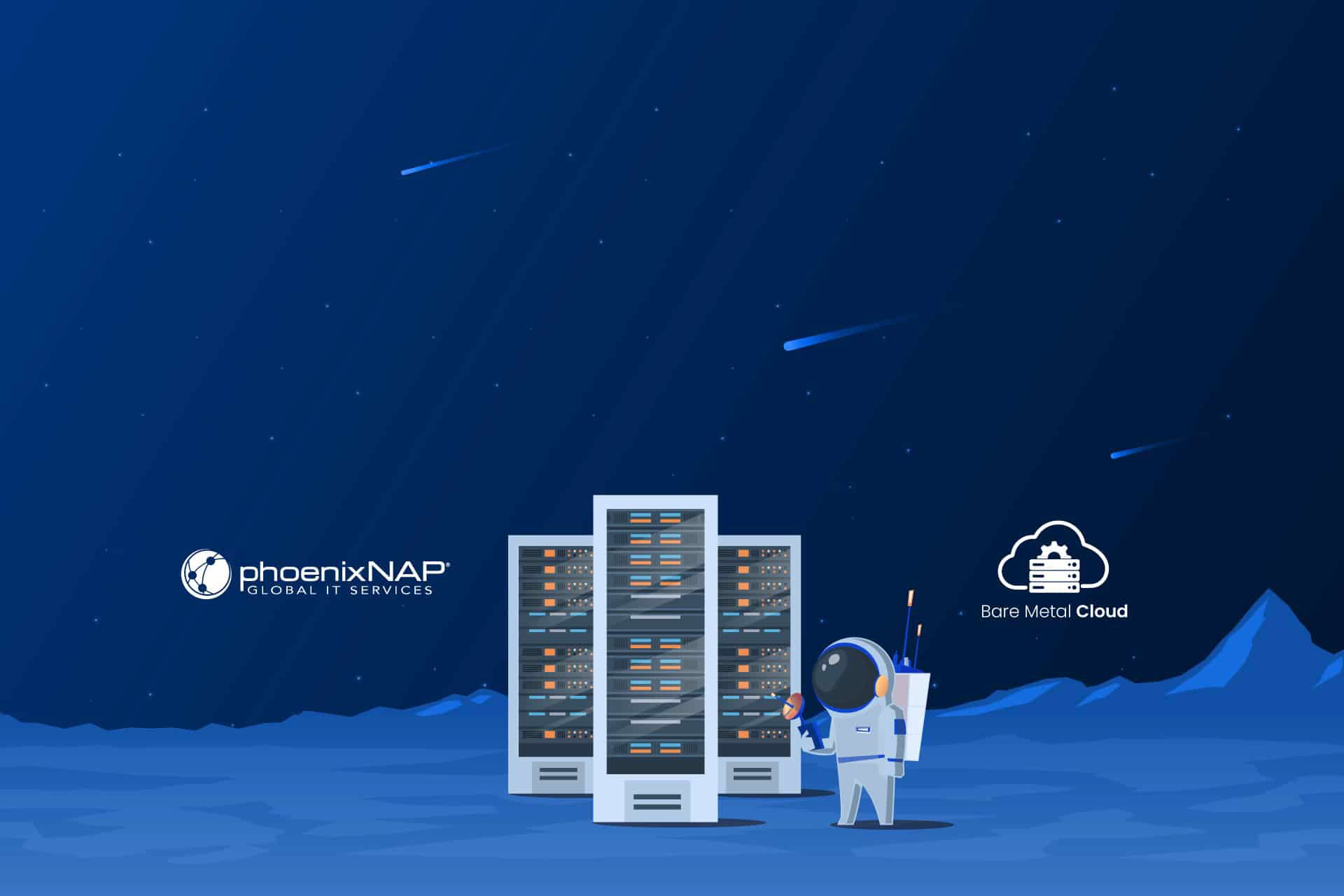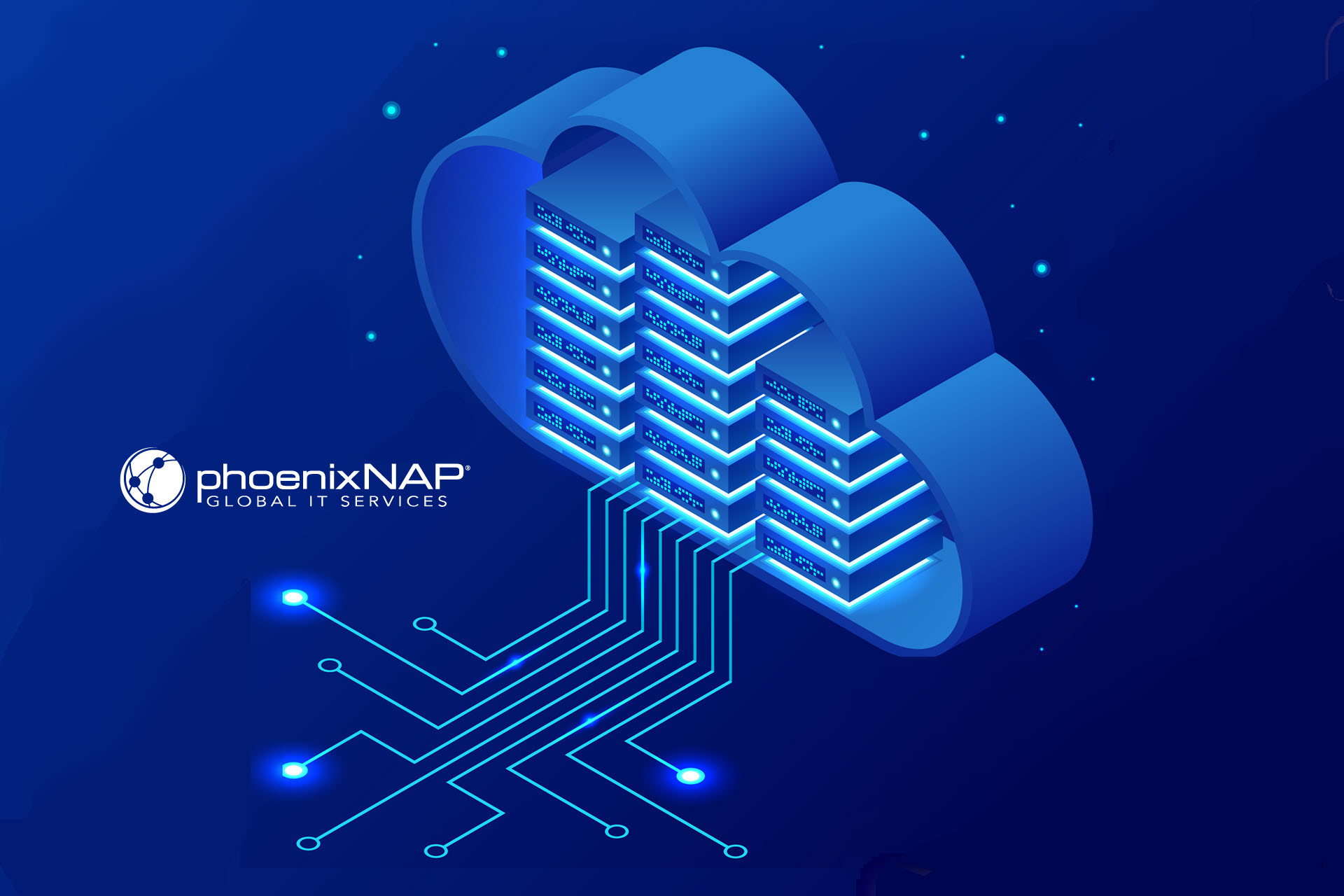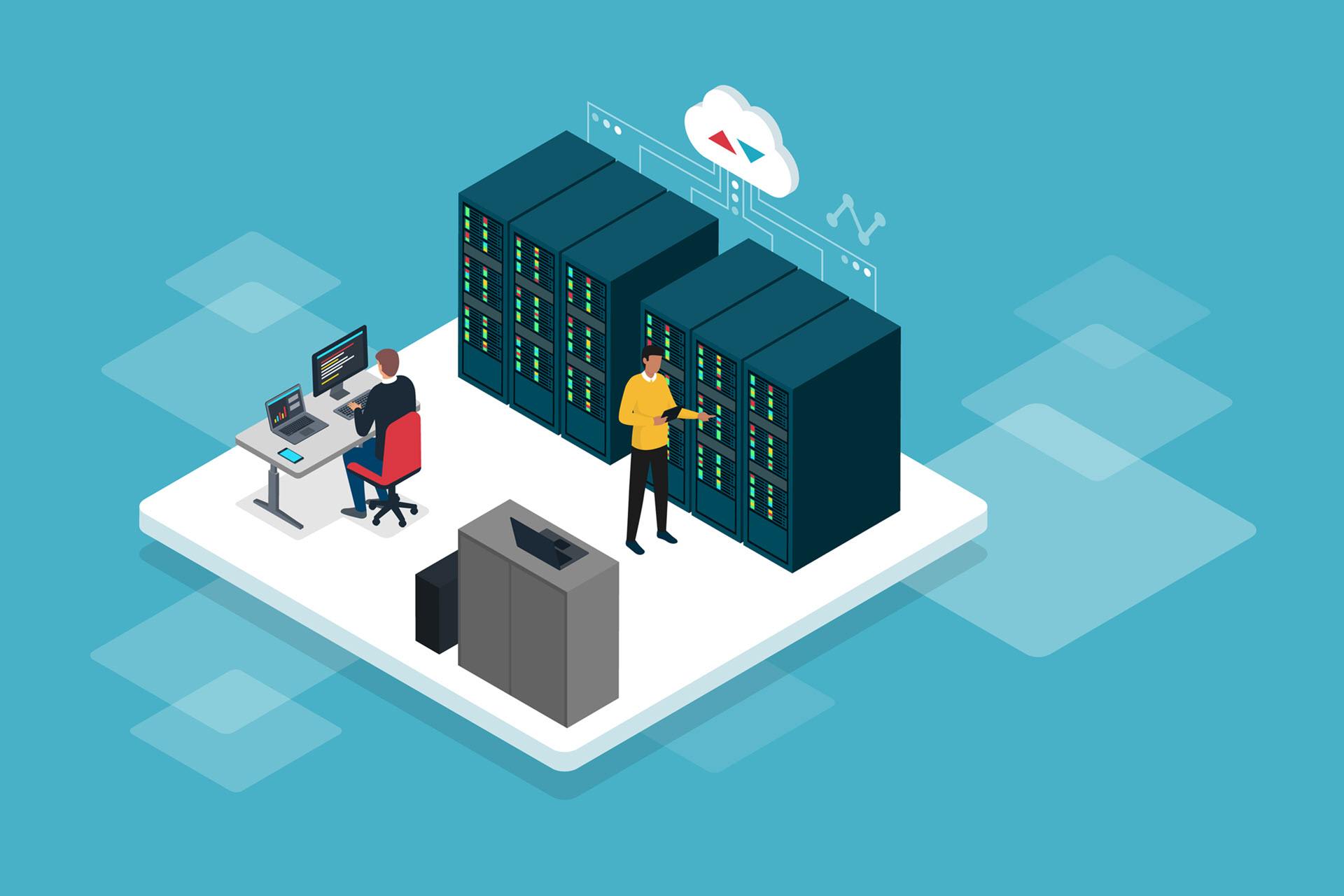Migrating your data and operations to the cloud doesn't automatically protect you from the issues and risks that affect your physical infrastructure. Hardware failures, data breaches, and software bugs also happen in cloud-based environments.
Nonetheless, the cloud is a potent tool that can supercharge your business continuity strategy by providing scalable and reliable infrastructure, facilitating remote work, and ensuring data resiliency.
In this article, I’ll delve into the opportunities and challenges of managing business continuity in the cloud and hopefully help you make more informed decisions that will strengthen your business.
Is Cloud Computing a Good Option for Business Continuity Solutions?
Cloud computing offers many benefits for business continuity, but there are some potential drawbacks.
Let's examine the pros and cons.
The Pros of Cloud Computing for Business Continuity:
- Simplicity and Accessibility: One of the significant advantages of cloud computing is that it eliminates the need for on-site infrastructure. Businesses avoid the hassle of installing and managing hardware and software, streamlining their operations.
- Enhanced Security: Cloud providers invest heavily in cybersecurity, with dedicated experts monitoring systems 24/7. This level of security often surpasses what many organizations can achieve independently.
- Continuous Uptime: Cloud services are designed to be constantly accessible, minimizing downtime and ensuring that your critical applications and data are available around the clock.
- Resilience and Redundancy: Cloud service providers build redundancy and resilience into their systems as foundational principles. This approach involves duplicating critical components and distributing data and applications across geographically diverse data centers to reduce risk.
- Automated Backups: Cloud platforms generally offer automated data backup, reducing the risk of data loss and simplifying disaster recovery planning.
- Physical Security: Data centers, which house cloud infrastructure, often boast robust physical security, protecting against threats like break-ins and natural disasters.
- Cost Efficiency: With cloud computing, you pay only for the resources you use, enabling you to scale your infrastructure as needed without hefty upfront investments.
For an in-depth analysis of cloud computing costs, refer to our blog article.
The Cons of Cloud Computing for Business Continuity:
- Potential Downtime: Although cloud services strive for high availability, data centers can still experience failures and downtime.
- Limited Control: Unlike on-premise solutions, the cloud introduces layers of abstraction and control that may limit your ability to fine-tune procedures.
- Responsibility for Protocols: While cloud providers handle infrastructure, the end user is responsible for implementing a backup strategy that defines how often data is backed up, where backups are stored, and how they are restored. It is also up to the user to implement security measures such as access controls and encryption for sensitive data, monitor for security incidents, and ensure compliance with industry-specific regulations.
- Internet Reliance: Cloud computing relies on a stable internet connection. If there are internet disruptions or outages, access to essential applications and data may be compromised.
- Trust Issues: Transitioning to the cloud requires placing trust in the provider's commitment to the privacy and security of your data.
- Resource Overhead: Virtualization requires extra processing power to manage virtual machines (VMs) or containers. This overhead can impact the overall performance of cloud-based applications, potentially costing more than your current needs require.
- Vendor Lock-In: Adopting a specific cloud provider's services can lead to vendor lock-in, making it challenging to migrate to another provider or bring services in-house.
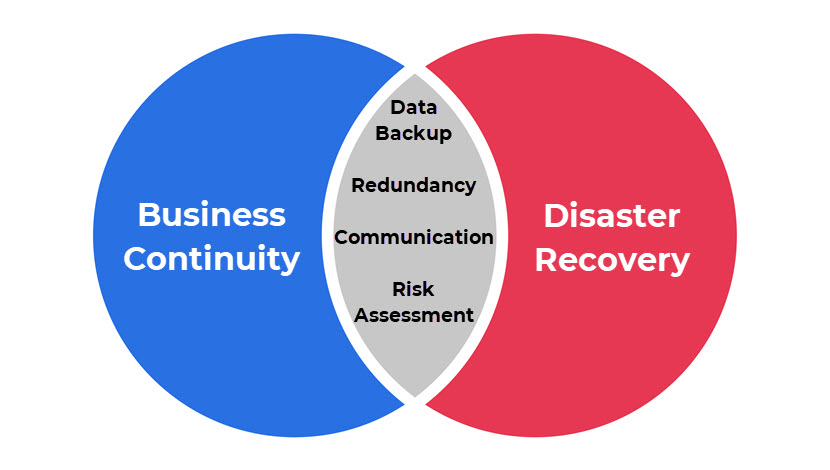
Although similar, business continuity and disaster recovery have separate goals. Disaster recovery aims to quickly restore vital IT services and operations after disruptions. On the other hand, business continuity focuses on maintaining overall business functionality during unexpected events. To learn more, read our article Business Continuity vs. Disaster Recovery.
Cloud Services for Business Continuity
Cloud service models are different methods through which cloud providers deliver computing resources to organizations. Each model offers a different level of control, management responsibility, and abstraction. There are two broad approaches to leveraging cloud computing for business continuity.
The first approach is to integrate the cloud with existing infrastructure to enhance redundancy. For example, a company might have both a traditional physical data center and cloud-based assets to complement or back up the existing infrastructure.
The second approach involves hosting everything in the cloud. The company's IT infrastructure, applications, and data are entirely cloud-based without relying on physical data centers.
Here is an overview of the primary cloud service models and how they contribute to maintaining business continuity:
SaaS
SaaS, or Software as a Service, is a cloud service model where companies subscribe to services accessible via the internet. The service provider manages the software, hardware, upgrades, and security patching.
Examples: Microsoft 365, Salesforce, Canva, Dropbox, Jira, Zoom.
Business Continuity Benefit: The key benefit of SaaS is that it enables access to software from multiple devices, regardless of their location. By leveraging SaaS, users can carry out business functions even in disruptive situations, such as a power outage at the office or working remotely due to a pandemic.
DRaaS
DRaaS, or Disaster Recovery as a Service, is a cloud service model that provides businesses with a comprehensive and reliable disaster recovery solution.
Examples: phoenixNAP DRaaS, AWS Disaster Recovery, Azure Site Recovery.
Business Continuity Benefit: With DRaaS, businesses get an out-of-the-box solution that can replicate their critical systems and data to remote cloud environments during a disaster or disruption. DRaaS minimizes downtime, reduces data loss, and helps businesses maintain customer trust and operational efficiency.
A minute of downtime costs an average of $9,000, equivalent to around $500,000 per hour. And if a business cannot resume normal operations within five days after a disaster, a staggering 90% of them face failure within a year. To make matters worse, only 54% of organizations have a well-defined, company-wide disaster recovery plan. For a deeper dive into the context of these statistics and more insights on disaster recovery, read our article on the must-know Disaster Recovery Statistics for 2023.
IaaS
IaaS, or Infrastructure as a Service, is a cloud service model where companies rent servers, server racks, and virtual machine storage on a pay-as-you-go basis. In this model, the service provider manages the physical hardware and its location, while the company is responsible for installing and managing its programs and applications.
Examples: phoenixNAP IaaS, Amazon Web Services (AWS), and Microsoft Azure.
Business Continuity Benefit: IaaS enables businesses to rapidly deploy and scale their IT systems, eliminating the need for significant hardware investments and costly data center maintenance. This model also ensures high availability during emergencies, eliminating the necessity for separate disaster recovery equipment and personnel. Additionally, the vendor is responsible for network and hardware security and maintenance, relieving businesses of these duties.
BaaS
BaaS, or Backup as a Service, is a cloud service model where companies outsource their data backup and recovery to a third-party provider. In this model, the service provider manages the infrastructure and processes that ensure that data is securely backed up and recoverable when needed.
Examples: phoenixNAP Data Backup and Restore Solutions, Acronis Cyber Protect Cloud, Backblaze.
Business Continuity Benefit: With BaaS, businesses can securely store backup copies of their data in remote cloud servers, reducing the risk of data loss and ensuring that they can quickly recover and resume operations.
PaaS
PaaS, or Platform as a Service, is a cloud service model where providers offer a development framework for companies to build, deploy, and manage applications without worrying about the underlying hardware or software infrastructure. In this model, the service provider manages the development tools and runtime environments, enabling companies to concentrate on application development.
Examples: AWS Elastic Beanstalk, Google App Engine, Azure App Service.
Business Continuity Benefit: PaaS enables companies to develop, test, and deploy new products from any location, ensuring business continuity. This capability fosters organizational agility by enabling remote development and collaboration unconstrained by geography.
STaaS
STaaS, or Storage as a Service, is a cloud service model that allows businesses to store data in remote cloud servers rather than on their own on-premise infrastructure.
Examples: phoenixNAP Cloud Object Storage, Amazon Web Services, Microsoft Azure.
Business Continuity Benefit: STaaS is the foundation for storing and managing data in the cloud, serving as a versatile, scalable, and highly accessible solution for various data types. Additionally, STaaS enables businesses to perform off-site data backup without engaging more specialized and expensive BaaS solutions.

While the cloud is a valuable asset for business continuity, it's essential to have a comprehensive strategy that accounts for the potential challenges. Ensure that all elements of your plan align seamlessly using our business continuity plan checklist as your guide.
Cloud Host Environments and How They Affect Business Continuity
The choice of cloud host environment significantly influences business continuity. Each environment offers distinct advantages and considerations, and businesses should carefully assess their needs and risk tolerance when designing and implementing their business continuity strategies.
1. Public Cloud
A public cloud is a computing environment in which resources are owned and operated by a cloud service provider and rented to customers on a shared infrastructure. Most SaaS platforms are hosted on public cloud infrastructure due to its scalability and cost-efficiency.
The primary advantage of public clouds is that they are generally the most affordable and efficient way to host reliable backups. Leading public cloud providers also have geographically dispersed data centers, which enhances business continuity by providing data replication and disaster recovery options across locations.
The main drawback of public clouds is that they are multi-tenant environments, and resource contention with other users can affect performance and availability. One or more tenants or virtual machines on a shared physical server or within a shared virtualized environment consume excessive computing resources or generate high network traffic. This resource contention makes the public cloud ill-suited for fluctuating workloads and can lead to performance degradation for neighboring VMs on the same server.
2. Private Cloud
A private cloud is a computing environment dedicated exclusively to a single organization, offering greater control and security than public clouds.
Since private clouds provide exclusive access to the underlying hardware and resources, they have a more predictable and consistent performance. For instance, during unexpected spikes in workloads, a private cloud is more likely to maintain peak performance levels, thereby reducing the risk of downtime.
Private cloud environments also deliver enhanced data privacy, making them suitable for industries with strict regulations, such as healthcare, which has to comply with HIPAA cloud storage requirements.
Read our article Public vs. Private Cloud for an in-depth analysis of the distinctions between these environments and advice on choosing the right one for your needs.
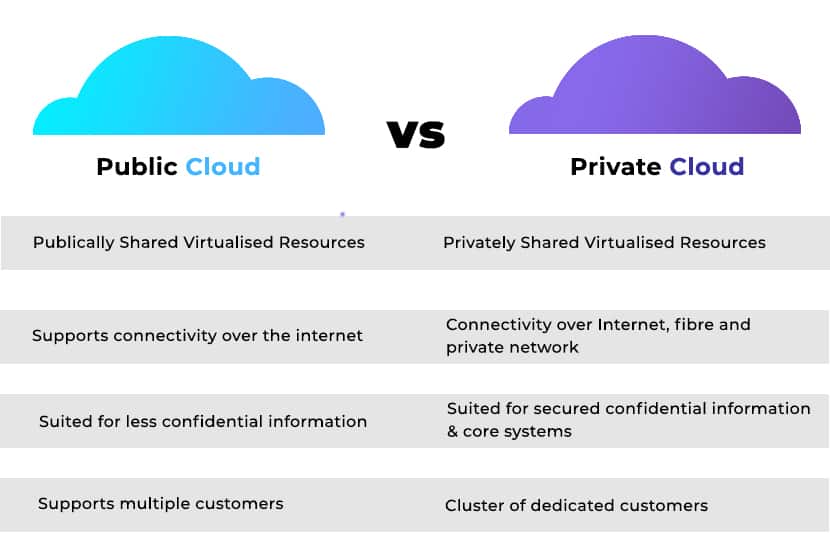
3. Hybrid Cloud
A hybrid cloud combines both public and private clouds, allowing data and applications to be shared while maintaining distinct boundaries.
The primary advantage of hybrid cloud environments is that they provide users with the flexibility to mix and match public and private cloud resources based on specific use cases. Thus, the user maintains control over sensitive data in their private cloud while leveraging the scalability and cost-efficiency of public cloud resources for other functions.
Hybrid cloud setups can also replicate critical data and applications across public and private clouds, enhancing redundancy and availability.
4. Multi-cloud
Multi-cloud refers to using multiple cloud service providers or platforms to meet different computing needs, increase redundancy, and avoid vendor lock-in.
The advantage of the multi-cloud approach is that users can enhance redundancy and resilience, as disruptions affecting one provider won't impact the entire infrastructure.
However, managing multiple cloud providers can be complex and requires careful coordination of business continuity plans across different environments.
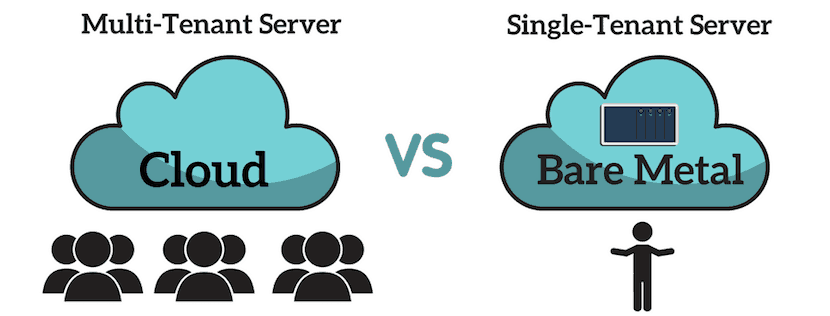
A bare metal cloud is a physical server fine-tuned to deliver the ease of use and flexibility of the cloud. It seamlessly blends the advantages of the cloud and a dedicated server, while mitigating their respective drawbacks. At phoenixNAP, we believe Bare Metal Cloud is the future. To understand our commitment, read my article on why we invested in Bare Metal Cloud.
How to Choose a Cloud Host for Business Continuity
When planning for business continuity, selecting the right cloud provider is vital.
One of the key considerations is data backup and recovery. First, you must determine whether data backup and recovery fall under your organization's purview or if the cloud vendor manages it. Exploring the vendor's backup methods and frequency is equally important. Your vendor's backup practices must align with your recovery time objectives (RTOs) and recovery point objectives (RPOs) so that your data can be restored within the required timeframes in the event of an incident.
Additionally, assessing data portability options is essential if you ever need to migrate data or switch providers. Data portability ensures you maintain control and can seamlessly transfer your data when needed, even in unforeseen circumstances.
Data security and compliance are the other criteria that you must factor in when selecting the right cloud host. This is especially true if your organization handles sensitive or regulated data, as non-compliance and data breaches can have serious legal and financial repercussions.
Examine your vendor's security protocols, encryption practices, access controls, and the overall robustness of their security framework. Depending on your industry and location, you may need to adhere to specific regulatory requirements, such as GDPR for European customer data.
Finally, data segregation within the cloud environment is vital to prevent unauthorized access and data leakage between tenants. Ensuring the vendor has robust data segregation measures is crucial, especially in multi-tenant environments.

Our article on business continuity best practices provides valuable tips to help you create a comprehensive strategy without missing any crucial elements.
Conclusion
Historically, data protection and business continuity planning were privileges enjoyed by large corporations with the means to construct secondary data centers. However, affordable and widely accessible cloud computing has democratized these vital services, opening doors to a broader audience.
There's no need for your organization to be at the mercy of minor disruptions, as business continuity is more achievable than ever. Embrace the accessibility of cloud solutions, not just as a measure of resilience but as an investment in your long-term success.
